Carrot Profile
Written by Joy
Nov 05 2020
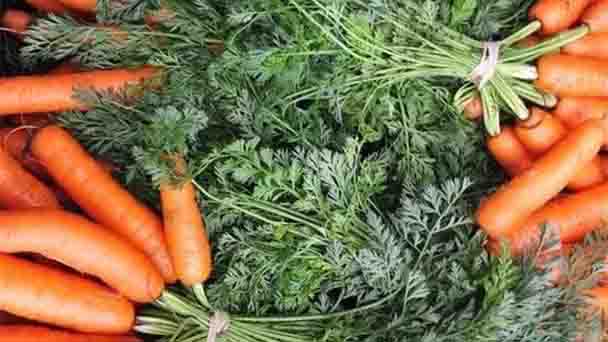
Carrots are a variety of wild carrots of the Umbelliferae family and the genus Daucus, an annual or biennial herb. The roots are stout, long conical, orange-red or yellow in color. The stems are erect, up to 90 cm high, and multi-branched. The leaves have long stalks, pinnately compound leaves, lobes linear or lanceolate, with sharp apex; the base of the petiole is enlarged to form a leaf sheath. Compound umbels. The peduncle of carrots has rough and hard hair; there are many involucres, which are leaf-like, and the radials of the outer edge of the umbrella are curved inward; the flowers are usually white, sometimes reddish; the flower stalks are not equal in length. The fruit is conical with white thorns on the edges.
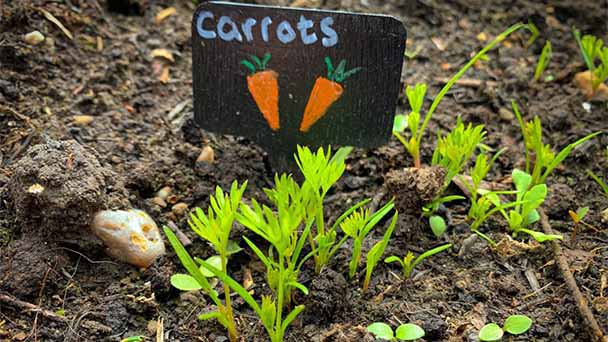
Carotene is the main source of vitamin A, and vitamin A can promote growth, prevent bacterial infections, and has the functions and effects of protecting epidermal tissues, protecting the respiratory tract, digestive tract, urinary system and other epithelial cell tissues; carrots contain a kind of pipit in Regular consumption can increase coronary blood flow, promote the synthesis of adrenaline, and reduce blood pressure and reduce inflammation. Carrot seeds contain 13% oil, which can drive roundworms and cure long-lasting dysentery. Carrot leaves can prevent chickenpox and acute jaundice hepatitis. Long-term consumption of carrot juice can prevent night blindness, dry eye disease, plump skin, flatten wrinkles, eliminate spots and improve hair. Especially for smokers, eating carrots every day is more effective in preventing lung cancer.
Carrot morphological characteristics
Carrots are annual or biennial herbs. The roots are stout, long conical, orange-red or yellow in color. The stem is erect, 60-90 cm high, and much branched. The leaves have long stalks, 2-3 pinnately compound leaves, lobes linear or lanceolate, sharp at the apex, with small pointed ends; the base of the petiole is enlarged to form a leaf sheath.Carrots have multiple umbels, peduncle 10-55 cm long, with rough and hard hairs. It has many involucres, which are leaf-like, pinnately divided, and lobes are linear; there are many umbrella spokes, and the outer edge of the umbrella is curved inward in the fruiting period; 5-7 small involucres, not divided or 2-3 lobed. The flowers of carrots are usually white, sometimes reddish; the flower stalks are not equal in length. The fruit is round and bright, with white thorns on the edges.
Carrot growth habit and growing environment and distribution
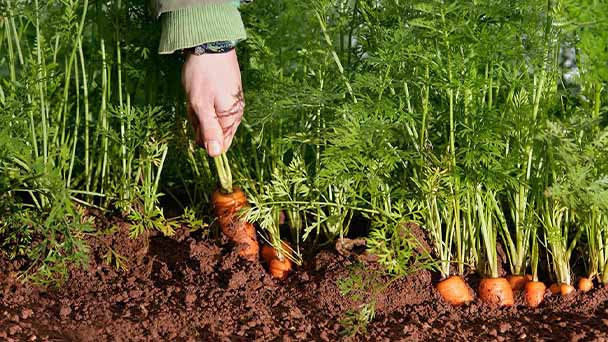
Carrot seeds are easy to germinate at 20-25℃, and the time required is about 5 days; the stems and leaves are most suitable for growth at 23-25℃, and the seedlings can withstand high temperatures above 27℃; suitable for taproot expansion period The temperature is 13-18°C. The flowering period of carrots is generally in April.
Carrot efficacy and role
The nutritional value of carrots has been paid more and more attention from people. This is mainly because the carotene in carrots is the main source of vitamin A, and vitamin A can promote growth, prevent bacterial infections, and protect the epidermal tissue, respiratory tract, digestive tract and urinary The function and role of the system and other epithelial cell tissues; lack of vitamin A will cause conjunctival sicca, night blindness, cataracts, etc., as well as muscle and internal organ atrophy, genital degeneration and other diseases. For the average adult, a daily intake of 2,200 international units of vitamin A is required to maintain normal life activities. It has the effect of preventing cancer, and it is believed that this is mainly due to the conversion of carotene into vitamin A in the human body.Carrots contain a kind of papaverine. Regular consumption can increase coronary blood flow, promote the synthesis of adrenaline, and reduce blood pressure and reduce inflammation. Carrot seeds contain 13% oil, which can drive roundworms and cure long-lasting dysentery. Carrot leaves can prevent chickenpox and acute jaundice hepatitis. Long-term consumption of carrot juice can prevent night blindness, dry eye disease, plump skin, flatten wrinkles, eliminate spots, and improve hair. Especially for smokers, eating carrots every day is more effective in preventing lung cancer.
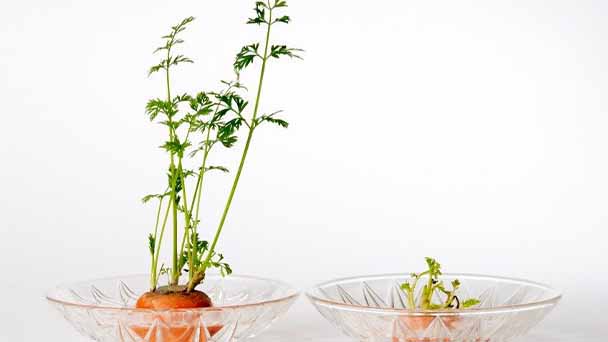
① The antioxidant vitamins rich in carrots can inhibit the growth of cancer cells and reduce the incidence of tumors.
②Carrots contain a kind of saccharifying enzyme, which can decompose the carcinogenic nitrosamines in the food, thus reducing its carcinogenic effect on the human body
③There are more lignins in carrots that can improve the phagocytic ability of giant cells, so the activity of giant cells to swallow cancer cells is improved.
Improve the body's ability to resist diseases
Carrots are rich in lignin, quercetin, kaempferol, potassium succinate and other ingredients, which can increase coronary blood flow, reduce blood lipid content, promote the synthesis and secretion of adrenaline, and then have the effect of lowering blood pressure and strengthening the heart. The composition of the carrot cell wall is extremely rich in calcium pectinate, which can accelerate the coagulation of bile acids and promote the conversion of cholesterol to bile acids in the human body, thereby reducing cholesterol and preventing coronary heart disease. Carrots are also rich in dietary fiber, which helps delay the absorption of intestinal glucose and reduce the increase in blood sugar, so it can regulate blood sugar levels and reduce the demand for insulin. The pectin substances in carrots can combine with mercury ions that enter the body to promote the excretion of mercury ions from the human body and eliminate or reduce the harmful effects of mercury on the human body.Anti-oxidation, anti-aging
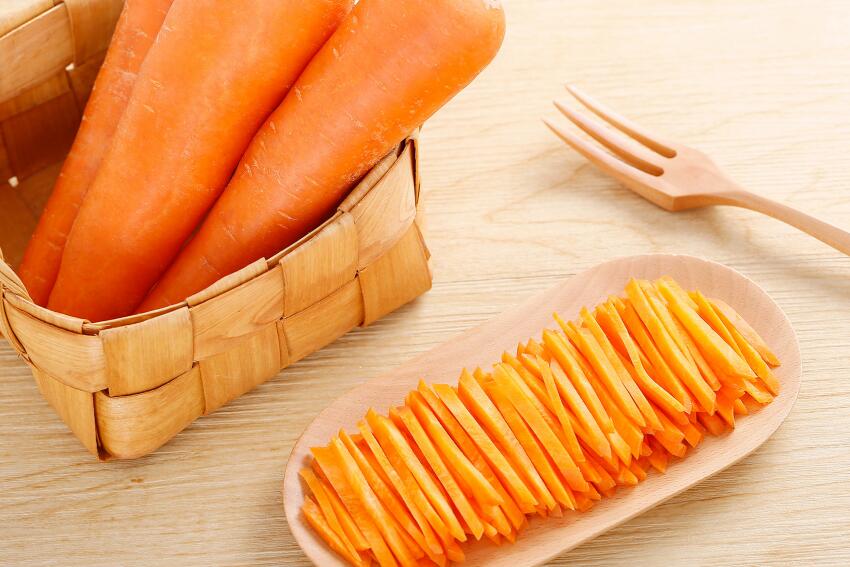
Carrot cultivation
Sowing date selection
Carrots are generally sown in spring in February, harvested in May-July, in autumn generally sown in July, and harvested in November-December. In Guangdong, Fujian and other places, seeds can be planted at any time from August to October, and harvested at any time in winter. In the middle and lower reaches of the Yangtze River, sown in early August and harvest at the end of November. In North China, sown from early to mid-July and harvest in mid-November. In cold regions at high latitudes, the sowing period can be earlier. The northern part of Xinjiang should be sown in early June and harvested in October.In spring and summer cultivation, in northern regions, after sowing carrots in spring, the temperature at the early stage of growth is relatively low, which makes it easy for the plants to pass through the vernalization stage and bolt early in the summer. In order to prevent the occurrence of early bolting, the sowing date should not be too early. If the sowing date is too late, the swelling period of the fleshy roots will be in hot and rainy June to July. Too high humidity is easy to cause many diseases; too high temperature seriously affects the accumulation of fleshy root nutrients, which will greatly reduce the yield. Therefore, the carrot spring sowing time must be appropriate. Open field cultivation in Shandong Province is generally sown around March 20, and the late frost period is about 10 days after emergence. When it grows to 3-4 leaves in mid-to-late April, the temperature has risen to above 10°C. This generally does not occur in advance bolting. Many places use small arched sheds to cultivate carrots, which can be sown in early March, and the plastic film will be gradually removed in mid-to-late April and transferred to open field cultivation. This kind of cultivation method will not occur early bolting phenomenon. Because the planting period is earlier and the fleshy root expansion period is earlier to the cold time, the yield is higher.
Soil management
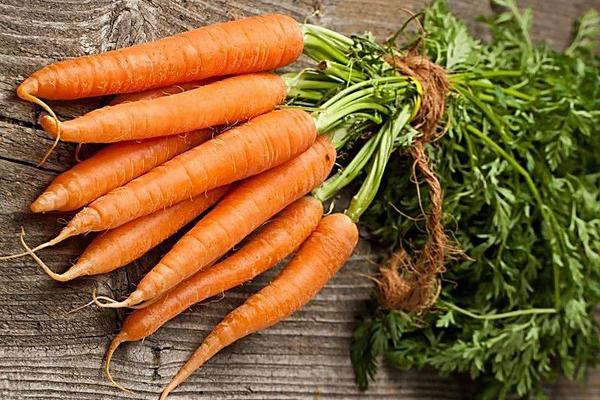
Sowing
The sowing method of carrot has a great influence on the emergence rate and the emergence of whole seedlings. If the seeding is extensive, it will be difficult to guarantee the completeness, uniformity and uniformity of the seedlings. There are generally the following seeding methods in production:Machine drill method: select small vegetable seed precision seeder for drill. The seeding rate of the machine drill is uniform, the seeding depth is the same, the cover is the same, and the seeds are saved, and the seedlings are all, uniform and uniform. This is an efficient and effective sowing method, which realizes the semi-mechanization of carrot sowing.
Fluid seeding
Fluid seeding is to prepare a suspension of carrot seeds after soaking and accelerating germination, and then use a special planter or watering can to sow the suspension. This is a new method for sowing small seeds, which is better than traditional sowing and drill sowing.① Accelerating germination. First rub the seeds to remove the thorns, scald the seeds with 30-40℃ warm water, soak for 4-6 hours when the water temperature drops to room temperature, bleach to remove the empty and deflated seeds and remove the germination. After the seeds are white, the buds can be sown when the length of the buds does not exceed 2 meters.
②Prepare the colloidal suspension of water-retaining agent. According to the degree of water absorption of different water retention agents, different dosages are used. In principle, the seeds are uniformly suspended as the criterion, and then 0.1% 50% monocrotophos, 0.1% 50% carbendazim powder, 0.1% drought-resistant agent No. 1 and The right amount of hormones.
③Sowing method. First of all, put the germinated seeds in a colloidal suspension of a water-retaining agent, preferably 10-15 grains/cm3. Then, use a single-row or three-row fluid planter to sow seeds at a seed density of 30-35 seeds/meter. When there is no fluid planter, pour the seed suspension into an aluminum pot and stream it in the pre-opened seeding ditch. Finally, the overburden is 0-1.2 cm thick.
Latest Updated
- Benefits of Bugleweed - 7 Science-backed Health Benefits
- Bugleweed Dangers & Side Effects - Is It Poisonous?
- How to Plant Evergreen Trees - What You Should Know
- When to Plant Evergreens - Grow Guide for Evergreen Trees
- 12 Wonderful Evergreen Shrubs for Your Garden
- 12 Popular Evergreen Plants with Pictures for Beginners
- When And How To Prune A Lilac Bush Like a Pro
- How to Grow & Care for Lilac Vine (Hardenbergia Violacea)
- Japanese Lilac Tree (Syringa Reticulata) Care & Propagation Guide
- Shumard Oak Pros and Cons - What to Know
Popular Articles
- Winter maintenance of Antirrhinum Majus
- How to Grow Terminalia Mantaly Tree
- How to Grow and Care for Crossostephium Chinense
- How to grow Antirrhinum Majus in spring
- Peristeria Elata (Dove Orchid) Profile: Info & Care Guide
- Underwatered Snake Plant (Sansevieria Trifasciata) - Signs And How To Fix
- How to Care for Brazilian Jasmine Plant (Mandevilla Sanderi)
- How to Grow & Care for Graptopetalum Purple Delight in Summer
- Rosa Chinensis (China Rose): Plant Growing & Care Tips
- How to Care for Baby Sun Rose (Aptenia Cordifolia)